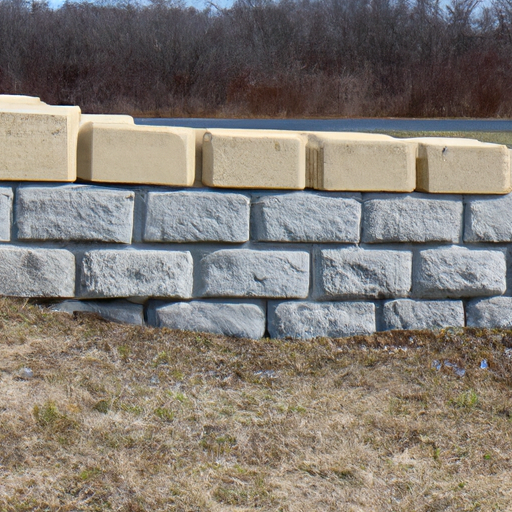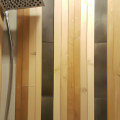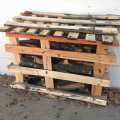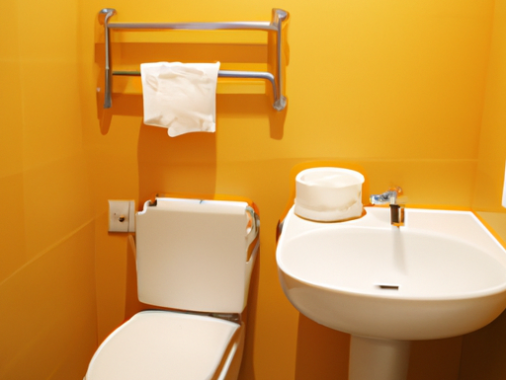-
Table of Contents
- Introduction
- How to Choose the Right Cinder Block Retaining Wall for Your Landscape
- The Benefits of Installing a Cinder Block Retaining Wall
- Design Ideas for Cinder Block Retaining Walls
- Tips for Building a Cinder Block Retaining Wall
- The Pros and Cons of Cinder Block Retaining Walls
- How to Maintain a Cinder Block Retaining Wall
- Common Mistakes to Avoid When Installing a Cinder Block Retaining Wall
- Q&A
- Conclusion
Introduction
A cinder block retaining wall is a great way to add structure and stability to your landscape. It can be used to create a raised garden bed, to create a terraced landscape, or to create a retaining wall for a sloped area. Cinder blocks are strong and durable, and they can be used to create a variety of shapes and sizes. With the right materials and tools, you can easily build a cinder block retaining wall that will last for years.
How to Choose the Right Cinder Block Retaining Wall for Your Landscape
When it comes to choosing the right cinder block retaining wall for your landscape, there are several factors to consider. First, you need to determine the purpose of the wall. Is it for aesthetic purposes, or is it for functional purposes such as preventing soil erosion? Knowing the purpose of the wall will help you decide which type of cinder block is best suited for your needs.
Next, you need to consider the size of the wall. Cinder blocks come in a variety of sizes, so you need to make sure that the wall you choose is large enough to meet your needs. You also need to consider the weight of the wall. Cinder blocks are heavy, so you need to make sure that the wall is strong enough to support the weight of the soil and other materials that will be placed on top of it.
Finally, you need to consider the cost of the wall. Cinder blocks can be expensive, so you need to make sure that you are getting the best value for your money. You should also consider the installation costs, as this can add up quickly.
By taking the time to consider all of these factors, you can ensure that you choose the right cinder block retaining wall for your landscape. With the right wall in place, you can enjoy a beautiful and functional landscape for years to come.
The Benefits of Installing a Cinder Block Retaining Wall
A cinder block retaining wall is a great way to add structure and stability to your outdoor space. It can be used to create a raised garden bed, to create a terraced landscape, or to create a barrier between two areas. Installing a cinder block retaining wall has many benefits, including:
1. Durability: Cinder blocks are extremely durable and can withstand extreme weather conditions. They are also resistant to fire, rot, and pests, making them a great choice for outdoor projects.
2. Cost-Effective: Cinder blocks are relatively inexpensive compared to other materials, making them a cost-effective choice for retaining walls.
3. Versatility: Cinder blocks can be used to create a variety of shapes and sizes, allowing you to customize your retaining wall to fit your needs.
4. Easy to Install: Cinder blocks are easy to install and can be done by a DIYer with minimal tools and experience.
5. Low Maintenance: Once installed, cinder block retaining walls require little maintenance. They are also easy to repair if needed.
Installing a cinder block retaining wall is a great way to add structure and stability to your outdoor space. With its durability, cost-effectiveness, versatility, easy installation, and low maintenance, it is an ideal choice for any outdoor project.
Design Ideas for Cinder Block Retaining Walls
Cinder block retaining walls are a great way to add structure and stability to your outdoor space. They can be used to create a raised garden bed, to create a terraced landscape, or to create a decorative wall. Here are some design ideas for cinder block retaining walls:
1. Create a raised garden bed. Cinder blocks are perfect for creating a raised garden bed. You can stack the blocks to create a wall that will contain the soil and plants. You can also use the blocks to create a terraced landscape, with each level of the terrace being a different height.
2. Create a decorative wall. Cinder blocks can be used to create a decorative wall. You can stack the blocks in a variety of patterns and colors to create a unique look. You can also use the blocks to create a seating area or a fire pit.
3. Add a water feature. Cinder blocks can be used to create a water feature, such as a waterfall or a pond. You can use the blocks to create a wall that will contain the water and create a beautiful focal point in your outdoor space.
4. Create a privacy wall. Cinder blocks can be used to create a privacy wall. You can stack the blocks to create a wall that will block out noise and provide privacy.
These are just a few design ideas for cinder block retaining walls. With a little creativity, you can create a unique and beautiful outdoor space with cinder blocks.
Tips for Building a Cinder Block Retaining Wall
1. Plan Ahead: Before beginning your cinder block retaining wall, it is important to plan out the design and layout of the wall. Consider the size, shape, and location of the wall, as well as the materials you will need.
2. Prepare the Site: Clear the area of any debris and level the ground. Make sure the area is free of any large rocks or roots that could interfere with the wall’s construction.
3. Dig a Trench: Dig a trench that is at least 8 inches deep and 12 inches wide. This will be the foundation for your wall.
4. Lay the Foundation: Place a layer of gravel in the bottom of the trench and tamp it down. This will help with drainage and provide a stable base for the wall.
5. Lay the Blocks: Begin laying the cinder blocks in the trench. Make sure to use a level to ensure the blocks are even and level.
6. Fill the Gaps: Fill the gaps between the blocks with gravel or sand. This will help to keep the blocks in place and provide additional stability.
7. Backfill: Once the wall is complete, backfill the area behind the wall with soil. This will help to keep the wall in place and provide additional stability.
8. Finish: Once the wall is complete, you can finish it with a layer of mortar or stucco. This will help to protect the wall from the elements and give it a finished look.
The Pros and Cons of Cinder Block Retaining Walls
Cinder block retaining walls are a popular choice for many homeowners due to their affordability and ease of installation. However, there are both pros and cons to consider before deciding if a cinder block retaining wall is the right choice for your project.
Pros
Cost: Cinder block retaining walls are one of the most cost-effective options for retaining walls. They are relatively inexpensive to purchase and install, making them a great choice for those on a budget.
Durability: Cinder blocks are incredibly durable and can withstand extreme weather conditions. They are also resistant to fire, making them a great choice for areas prone to wildfires.
Easy to Install: Cinder blocks are easy to install and can be done by a DIYer with minimal experience.
Cons
Aesthetics: Cinder blocks are not the most attractive option for a retaining wall. They can be painted, but the paint will eventually fade and need to be reapplied.
Maintenance: Cinder blocks require regular maintenance to keep them looking their best. They need to be sealed regularly to prevent water damage and cracking.
Limited Design Options: Cinder blocks are limited in design options and can be difficult to customize. If you are looking for a unique design, cinder blocks may not be the best choice.
In conclusion, cinder block retaining walls are a great option for those on a budget who are looking for a durable and easy to install retaining wall. However, they are not the most aesthetically pleasing option and require regular maintenance to keep them looking their best.
How to Maintain a Cinder Block Retaining Wall
Cinder block retaining walls are a great way to add structure and stability to your landscape. However, they require regular maintenance to ensure they remain in good condition. Here are some tips to help you maintain your cinder block retaining wall.
1. Inspect the wall regularly. Check for any signs of damage, such as cracks, bulges, or loose blocks. If you notice any of these issues, contact a professional to assess the damage and make repairs.
2. Clean the wall regularly. Use a pressure washer to remove dirt and debris from the wall. Be sure to use a low-pressure setting to avoid damaging the blocks.
3. Seal the wall. Sealing the wall will help protect it from water damage and other elements. Use a waterproof sealant designed for masonry surfaces.
4. Fill in any gaps. If you notice any gaps between the blocks, fill them in with mortar or concrete. This will help keep the wall stable and prevent water from seeping in.
5. Check for drainage issues. Make sure the wall is properly draining water away from your home. If you notice any standing water, you may need to install a drainage system.
By following these tips, you can ensure your cinder block retaining wall remains in good condition for years to come.
Common Mistakes to Avoid When Installing a Cinder Block Retaining Wall
1. Not accounting for drainage: A cinder block retaining wall should be designed with drainage in mind. Without proper drainage, water can build up behind the wall and cause it to fail.
2. Not using a level: It is important to use a level when installing a cinder block retaining wall. This will ensure that the wall is even and will not lean or collapse.
3. Not using a footing: A footing is necessary to provide a stable base for the wall. Without a footing, the wall may not be able to support the weight of the soil and could collapse.
4. Not using a geogrid: A geogrid is a type of reinforcement that helps to stabilize the soil behind the wall. Without a geogrid, the soil may shift and cause the wall to fail.
5. Not using mortar: Mortar is necessary to hold the blocks together and provide a strong bond. Without mortar, the blocks may not be able to support the weight of the soil and could collapse.
6. Not using a cap: A cap is necessary to provide a finished look to the wall and to help keep water out. Without a cap, water can seep into the wall and cause it to fail.
Q&A
1. What is a cinder block retaining wall?
A cinder block retaining wall is a wall made of concrete blocks that is used to hold back soil and other materials. It is often used in landscaping and construction projects to create a level surface or to provide support for a structure.
2. How do I build a cinder block retaining wall?
Building a cinder block retaining wall requires careful planning and preparation. First, you will need to determine the size and shape of the wall, as well as the materials needed. Then, you will need to excavate the area and lay a foundation. After that, you can begin laying the blocks and filling in the gaps with mortar.
3. What are the benefits of a cinder block retaining wall?
Cinder block retaining walls are strong and durable, and they can be used to create a level surface or to provide support for a structure. They are also relatively easy to install and can be customized to fit any space.
4. What are the drawbacks of a cinder block retaining wall?
Cinder block retaining walls can be expensive and labor-intensive to install. They also require regular maintenance to ensure that they remain in good condition.
5. How long will a cinder block retaining wall last?
A cinder block retaining wall can last for many years if it is properly maintained. However, the lifespan of the wall will depend on the quality of the materials used and the environment in which it is installed.
6. What type of maintenance is required for a cinder block retaining wall?
Regular maintenance is required to ensure that a cinder block retaining wall remains in good condition. This includes checking for cracks or other signs of damage, as well as cleaning the blocks and applying a sealant to protect them from the elements.
7. Are there any special considerations when installing a cinder block retaining wall?
Yes, there are several special considerations when installing a cinder block retaining wall. It is important to make sure that the blocks are level and that the wall is properly reinforced. Additionally, it is important to make sure that the wall is properly drained to prevent water from pooling behind it.
Conclusion
In conclusion, a cinder block retaining wall is a great way to add stability and strength to a landscape. It is a cost-effective and durable solution that can be used to create a variety of shapes and sizes. With proper installation and maintenance, a cinder block retaining wall can last for many years and provide a beautiful and functional addition to any outdoor space.




